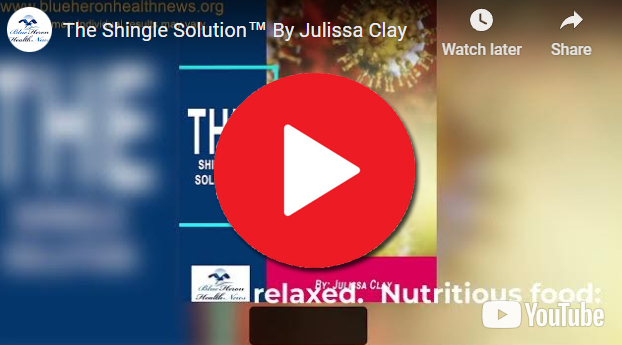
The Shingle Solution™ By Julissa Clay The Shingle Solution can be the best program for you to relieve your pain and itching by using a natural remedy. It describes the ways to use this program so that you can feel the difference after using it as directed. This natural remedy for shingles can also help in boosting your immune system along with repairing your damaged nerves and relieve pain and itching caused by shingles. You can use it without any risk to your investment as it is backed by a guarantee to refund your money in full if you are not satisfied with its results.
What are the most common treatments for shingles in the USA?
Common Treatments for Shingles in the USA
The treatment of shingles (herpes zoster) focuses on reducing the severity and duration of the symptoms, managing pain, and preventing complications such as postherpetic neuralgia (PHN). Here are the most common treatments used in the USA:
Antiviral Medications
1. Acyclovir (Zovirax)
- Dosage: Typically taken five times a day.
- Effectiveness: Reduces the severity and duration of shingles if started within 72 hours of rash onset.
- Administration: Available in oral, topical, and intravenous forms.
2. Valacyclovir (Valtrex)
- Dosage: Taken three times a day.
- Effectiveness: More convenient dosing than acyclovir, also effective in reducing symptoms and complications.
- Administration: Oral form.
3. Famciclovir (Famvir)
- Dosage: Taken three times a day.
- Effectiveness: Similar efficacy to valacyclovir and acyclovir in reducing the duration and severity of shingles.
- Administration: Oral form.
Pain Management
1. Over-the-Counter Pain Relievers
- Acetaminophen (Tylenol): Used for mild to moderate pain relief.
- Nonsteroidal Anti-Inflammatory Drugs (NSAIDs):
- Ibuprofen (Advil, Motrin): Reduces pain and inflammation.
- Naproxen (Aleve): Longer-lasting pain relief.
2. Prescription Pain Medications
- Opioids:
- Oxycodone (OxyContin): For severe pain not managed by OTC medications.
- Hydrocodone (Vicodin): Often combined with acetaminophen for enhanced pain relief.
- Anticonvulsants:
- Gabapentin (Neurontin): Used for nerve pain management.
- Pregabalin (Lyrica): Effective for neuropathic pain, including PHN.
- Antidepressants:
- Tricyclic Antidepressants (TCAs):
- Amitriptyline (Elavil): Helps manage chronic pain and improve sleep.
- Nortriptyline (Pamelor): Another TCA option for pain management.
- Serotonin-Norepinephrine Reuptake Inhibitors (SNRIs):
- Duloxetine (Cymbalta): Used for chronic pain management.
- Tricyclic Antidepressants (TCAs):
Topical Treatments
1. Topical Anesthetics
- Lidocaine Patches (Lidoderm): Applied to the affected area to numb the skin and relieve pain.
2. Capsaicin Cream
- Capsaicin (Zostrix): Applied to the skin to reduce pain by depleting substance P, a neurotransmitter involved in pain sensation.
Corticosteroids
1. Oral Corticosteroids
- Prednisone: Sometimes prescribed to reduce inflammation and pain, although their use in shingles is controversial and should be carefully considered due to potential side effects.
Alternative and Complementary Therapies
1. Acupuncture
- Pain Relief: Some patients find relief from pain through acupuncture, which can help reduce nerve pain and improve overall well-being.
2. Physical Therapy
- Movement and Function: Physical therapy may help maintain mobility and function, especially in cases of severe pain or complications affecting movement.
Treatment of Complications
1. Postherpetic Neuralgia (PHN)
- Long-Term Pain Management: For persistent pain after the shingles rash has healed.
- Anticonvulsants and Antidepressants: Continued use of medications like gabapentin, pregabalin, amitriptyline, and duloxetine.
- Topical Treatments: Ongoing use of lidocaine patches and capsaicin cream.
- Nerve Blocks: Injections that can provide pain relief for severe PHN cases.
2. Ophthalmic Involvement
- Eye Care:
- Antiviral Eye Drops: To prevent or treat eye complications.
- Steroid Eye Drops: To reduce inflammation if prescribed by an ophthalmologist.
- Regular Monitoring: Close follow-up with an eye specialist.
Vaccination
1. Shingrix (Recombinant Zoster Vaccine)
- Prevention:
- Recommended for Adults: Adults 50 years and older, and immunocompromised individuals 19 years and older.
- Dosage: Two doses, administered 2 to 6 months apart.
- Effectiveness: Over 90% effective in preventing shingles and its complications.
Conclusion
The treatment of shingles in the USA involves a combination of antiviral medications, pain management strategies, topical treatments, and, in some cases, corticosteroids and alternative therapies. Prompt initiation of antiviral therapy is crucial to reduce the severity and duration of the disease. Pain management includes both over-the-counter and prescription medications, along with topical treatments. Preventive vaccination with Shingrix is highly recommended for at-risk populations to prevent shingles and its complications. By employing a comprehensive treatment approach, healthcare providers can effectively manage shingles and improve patient outcomes.

The Shingle Solution™ By Julissa Clay The Shingle Solution can be the best program for you to relieve your pain and itching by using a natural remedy. It describes the ways to use this program so that you can feel the difference after using it as directed. This natural remedy for shingles can also help in boosting your immune system along with repairing your damaged nerves and relieve pain and itching caused by shingles. You can use it without any risk to your investment as it is backed by a guarantee to refund your money in full if you are not satisfied with its results.